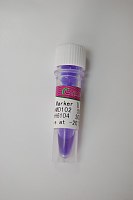Ultrasound Imaging of Apoptosis: DNA-Damage Effects Visualized
互联网
417
This chapter presents a new method for the detection of DNA damage that leads to the physiological process of apoptosis which is a normal programmed cell-death response to sufficiently toxic levels of DNA damage. The high-frequency ultrasonic detection of programmed cell death has been demonstrated in vitro, in situ , and in vivo using a variety of different apoptosis inducing methods (1 ,2 ). This method provides a useful image based adjunct for the detection of programmed cell death in a laboratory setting as well as being a powerful potential clinical tool which can be used to monitor tumour responses to treatment. Typical low-frequency medical ultrasound imaging devices operate at 1–10 MHz, provide mainly low resolution structural information, and predominantly are used in obstetrics and cardiology. In contrast, high-frequency ultrasound imaging devices operate at 30–50 MHz and offer increased resolution as well as the emerging capability to detect cells and tissues in different physiological states including those undergoing programmed cell death, or apoptosis (1 –4 ). Data collected to date indicates that this capability of high-frequency ultrasound is based on interactions of high-frequency ultrasound waves with the chromosomal nuclear material in cells, which undergoes structural changes of condensation and subsequent fragmentation with the process of programmed cell death (1 –2 ,4 ). We have demonstrated this process experimentally in vitro, in situ , and in vivo using a number of different systems in which apoptosis is induced with physiological stimuli, chemotherapeutic drugs, radiation, or photodynamic therapy. The ultrasound-based approach to detecting apoptosis has a number of potential applications which range from embryological studies of development where apoptosis plays an important role, to assessing organ viability for the purposes of transplantation, again a situation where the presence of programmed cell death is correlated to clinical outcome (5 ).






